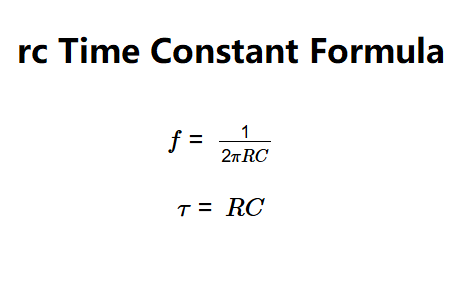 Home
Home
 Back
Back

Definition: This calculator computes the characteristic frequency (\( f \)), resistance (\( R \)), capacitance (\( C \)), or time constant (\( \tau \)) for an RC circuit, which consists of a resistor and capacitor in series.
Purpose: It is used in electronics to analyze RC circuits, determine the frequency response, and calculate the time constant for applications such as filters, timers, and signal processing.
The calculator uses the following equations for an RC circuit:
Where:
Steps:
Details: The RC time constant and characteristic frequency are critical in designing RC circuits for applications like filters, timers (e.g., 555 timer circuits), and signal processing, determining how quickly a capacitor charges or discharges.
Tips: Ensure all inputs are positive for resistance, capacitance, and frequency. The calculator assumes a simple RC circuit with no additional components affecting the time constant.
Examples:
Q: What is the RC time constant?
A: The RC time constant (\( \tau \)) is the time it takes for the voltage across a capacitor in an RC circuit to charge to approximately 63.2% of its final value, given by \( \tau = RC \).
Q: What is the characteristic frequency of an RC circuit?
A: The characteristic frequency (\( f \)) is the frequency at which the impedance of the RC circuit changes significantly, given by \( f = \frac{1}{2\pi RC} \).
Q: How is the RC time constant used in 555 timer circuits?
A: In 555 timer circuits, the RC time constant determines the timing intervals for oscillations or delays, controlling the frequency and duty cycle of the output signal.